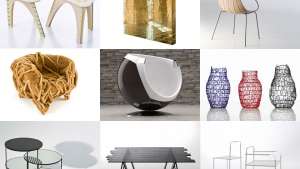From the Series
Provoked by the question “what will be the role and meaning of design in 50 years?”, three students of Scuola Politecnica di Design (SPD) in Milan bet on its power to change behaviours and lifestyles.
With their Superfarm installation at the Milan Furniture Fair last month Hafsteinn Juliusson, Joana Pais and Rui Pereira proposed a concept for a new way of cultivating and consuming food. The trio, all masters' students, also investigated ways of integrating and interacting with our communities and our lives, understanding and respecting the environment and staying healthy.
The SPD designers looked to a future where farming in cities will play an increasingly active role in food production. It has been estimated that by the year 2050 the world’s population will stand at 9 billion with 80% of this number residing in cities. New ways of feeding this staggering number of people will have to be found.
Superfarm thus proposed the creation of a new ecosphere, an extensive green network developing throughout the city. This concept would see entire neighbourhood redesigned by using “dismissed areas”, rooftops and the facades of building to cultivate garden and grow food.
Superfarm also proposed a futuristic, retro supermarket which prioritises health and nutrition. The idea is that customers would have to move and physically work before to earn their food. They would first have to burn existing calories before being allowed to buy more food. The underlying idea here is to take an ethical and sustainable approach to food production and consumption.
The installation comprised six different areas which all offered low-tech, added-value, alternative ways of addressing food and environmental issues. There was a greenhouse, a courtyard with live animals, a mindmill, fishpond, milking area and supermarket.

















